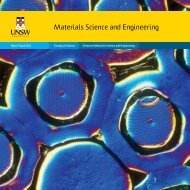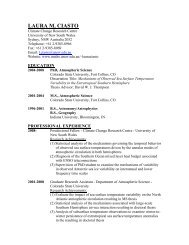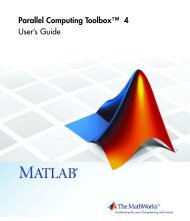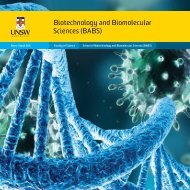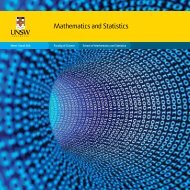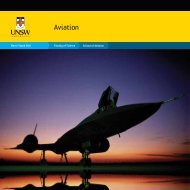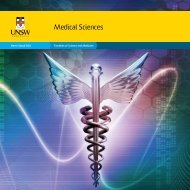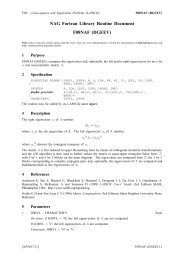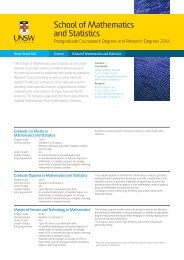2011 Postgraduate Research Competition - UNSW Science - The ...
2011 Postgraduate Research Competition - UNSW Science - The ...
2011 Postgraduate Research Competition - UNSW Science - The ...
Create successful ePaper yourself
Turn your PDF publications into a flip-book with our unique Google optimized e-Paper software.
Page |42<br />
Flight Safety and its Reliance on Cultural Attributes<br />
of Cabin Crew<br />
Morteza Tehrani and Brett Molesworth<br />
School of Aviation<br />
Abstract<br />
<strong>The</strong> role of cabin crew and their significance for cabin safety have been highlighted in<br />
several air accidents some of which could have been avoided if cabin crew had revealed<br />
the information they held. Nowadays major airlines embrace diverse cabin crew with various<br />
cultures whose performance may be affected by their behaviours.<br />
<strong>The</strong> diversities and interrelationship of cultures can produce friction which may disintegrate a<br />
team and lose its synergy and cohesiveness. A good safety system should form a safety<br />
culture to foresee all aspects of cultural attributes the cabin crew present as they are<br />
selected from diverse groups and backgrounds.<br />
This study will explore the attributes of the existing issues and the optimal character for the<br />
cabin crew to perform a safe and efficient operation. <strong>The</strong> findings of this research should<br />
highlight the weak areas of our flight operations.<br />
In addition, it is anticipated that this study will develop a scientifically valid tool to identify<br />
safety culture within the cabin area. This tool has the potential application for various<br />
aviation organisations internationally. Furthermore, with minor modifications it is anticipated<br />
that the tool could be adopted in other complex socio-technical environments such as<br />
medicine, rail and marine.<br />
Photoluminescence Study and Characterization of<br />
Optically Trapped InP Semiconductor Nanowires<br />
Abstract<br />
Fan Wang and Peter Reece<br />
School of Physics<br />
My work is mainly using optical tweezers to research physical and optical properties of<br />
semiconductor nanowires, especially InP nanowire with length of 5-15μm and diameter of 30-<br />
150nm. Recently semiconductor nanowires attract more interest for nano-scale<br />
optoelectronic integrated circuits and devices, due to its potentially function as both<br />
electrical and optical conduits. While optical tweezers is a powerful tool for manipulating<br />
single nanowire; combined with micro-photoluminescence it is effective for characterization<br />
and application of individual semiconductor nanowires. By means of back focal plane<br />
interferometery, the motion and trap stiffness of trapped nanowire can be quantitatively<br />
investigated, which can be used to research Brownian dynamics of nanowires and two<br />
nanowires’ coupling dynamics. An IR trapping laser (1064nm) and a visible excitation laser<br />
(514.5nm) are used to characterize single nanowires’ photoluminescence (PL) property<br />
including direct PL, two-photon absorption PL and second harmonic generation. For InP<br />
nanowire the PL property for different crystalline phases is researched also. Combined wave<br />
guiding and PL properties of nanowires can be used to nanowire scanning probe. While<br />
combing wave guiding with Bessel beam excitation, the potential trapping nanowire laser<br />
may be achieved.<br />
science + society |



